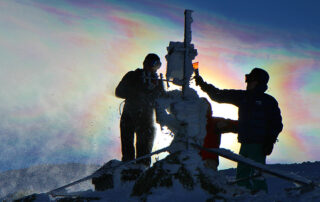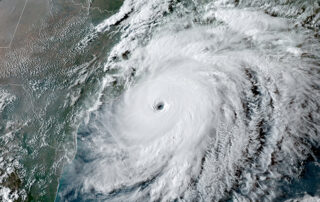Citizen Science Puts Weather Reporting in Your Hands

Ryan Knapp, Weather Observer & Meteorologist
New Normals Reveal Valley and Summit Temperature Increases, Among Other Climate Trends
New Normals Reveal Valley and Summit Temperature Increases, Among Other Climate Trends By Brian Fitzgerald, Director of Science & Education | November 15, 2021 Chances are, you’ve heard a meteorologist refer to weather conditions as near, above, or below “normal.” But just what is normal
Partnerships Key to Continuous Mesonet Operation
Partnerships Key to Continuous Mesonet Operation By Peter Gagne, Technology & Operations Manager | November 15, 2021 An AMC helicopter airlifts 150-pound batteries plus other heavy items to Mizpah Spring and Lakes of the Clouds huts on Sept. 13. Ringo Starr was mostly the silent,
Weather 101: Tropical Storms
Weather 101: Tropical Storms By Nicole Tallman, Past Weather Observer & Education Specialist | November 15, 2021 An example of a hurricane’s eye and surrounding eye wall, where the most ferocious winds of the storm occur. NOAA photo. Come late summer and early fall, we
A Note About Our Afternoon Forecasts
A Note About Our Afternoon Forecasts 2020-04-03 16:22:08.000 - MWO Staff, Mount Washington Observatory At this time, Mount Washington Observatory has decided to suspend our afternoon Higher Summit’s Forecast in both written and recorded
Home of the World’s Worst Weather Live!
Home of the World's Worst Weather Live! 2020-03-30 14:09:36.000 - Rebecca Scholand, Summit Operations Manager It’s nothing new that the Mount Washington Observatory is committed to education. In fact, part of our mission is
METAR Code: How it led to a Unique Social Distancing Selfie
METAR Code: How it led to a Unique Social Distancing Selfie 2020-03-23 21:08:24.000 - Rebecca Scholand, Summit Operations Manager METAR: Meteorological Terminal Aviation Routine Weather Report Every hour of every day the Mount




